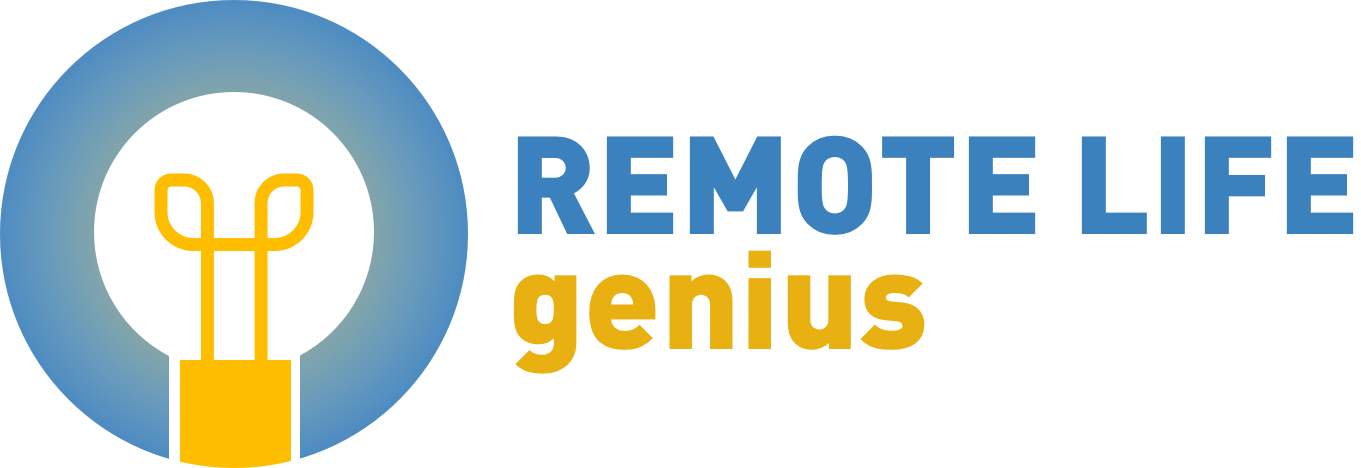 Getting started as a freelancer can seem like a daunting task. Sometimes, it’s like applying for jobs all over again. Submitting application after application and hoping to hear back from maybe 10% of people.
Getting started as a freelancer can seem like a daunting task. Sometimes, it’s like applying for jobs all over again. Submitting application after application and hoping to hear back from maybe 10% of people.
When you don’t have a track record of clients, how do you get started?
Well, a little bit of preparation and smart thinking will have you on your way to your first paid freelance gig.
Follow the steps in this guide to get your freelance business off the ground and land your first client.
Page Contents
Building Your Portfolio
Most people and companies who hire freelancers want to know what your work looks like. So, before you even start marketing yourself or contacting potential clients you need your work samples in order.
Most people can easily get stuck spending too much time at this stage. In the start-up world, there’s something known as the MVP, or minimum viable product. This is a product that has just enough features to satisfy early adopters. While there are plans for more features, it’s important to share the core function with customers to test the product.
 So, you can do the same thing with your work portfolio. While you may have plans for a fully fleshed-out website, your minimum product can be simple. Check out our guide for creating a freelance portfolio website here. It will walk you through the MVP features your online portfolio needs.
So, you can do the same thing with your work portfolio. While you may have plans for a fully fleshed-out website, your minimum product can be simple. Check out our guide for creating a freelance portfolio website here. It will walk you through the MVP features your online portfolio needs.
A website will also help you establish credibility. You’ll look more like a real business, and therefore, more attractive to potential clients. People are more likely to pay more for professional services.
Of course, you don’t need a website when you’re going after your first couple of clients. It’s absolutely helpful down the road, but you can get by with a simpler MVP.
Examples of this could be a document with links to published articles if you’re a freelance writer. Or, you can create a google folder of your work samples to share with a potential client.
Freelance photographers can use Instagram or Flickr to showcase their work. You can also use your resume if you’re applying for something like freelance digital marketing or virtual assistant.
Your portfolio can and should include all relevant education and work experience. If you’ve been paid to do something before, that qualifies you as a professional. You can also include charity work that you have done for free, if it’s relevant.
Getting Testimonials
Another thing that potential clients will want to see is that you can be trusted. The best way to show this is through testimonials.
Given that, you should reach out to existing colleagues to collect testimonials about your work. One of the easiest ways to do this is through Linkedin. You can request that someone endorse you. Some examples of people to reach out to include past manager, co-workers, classmates, professors, and people that you volunteer with. 
Before you reach out for testimonials, make a list of the types of qualities you want them to include. For example, these can be related to the type of work. If you are going to be a freelance writer, you want them to include skills like writing, communication, and editing.
Additionally, you want to create a list of good freelancer qualities. These can include communication, adherence to deadlines, understanding client needs, and attention to detail.
Your first testimonials do not need to be freelance clients.
Testimonials are there to speak for your quality of work. They reassure future clients that you’ll do a good job, and you can work on time. By the same token, your testimonials also show what it’s like to work with you.
At the end of the day, hiring happens between people. If you can work with clients that are compatible with your style, it’s better for everyone involved. Having testimonials helps your prospects get an idea of the type of person you are.
Reaching out to your network for clients
Once you have your experience, work samples, and testimonials ready, it’s time to start marketing yourself.
One of the best tools you have is your existing network, personal and professional. However, this can be the one resource that beginner freelancers are afraid to tap into.
Why Referrals
As we mentioned earlier, landing clients is all about one thing: building trust.
In general, customers that are referred from a friend are 4x more likely to purchase.
Referrals help build more trust, and they can help you find opportunities that aren’t posted publicly.
Another benefit of referrals is that they can help you land better clients. If your friends and colleagues are trying to help you out, they won’t refer you to a bad client. They will feel responsible for your experience.
Eventually, you can build a referral funnel from your existing clients. However, at the beginning you’ll use what you have: your network.
Step 1 – Do your homework
In order to get the best results from your network, you need to do a little bit of preparation. First, you need to have a specific idea of what your “offering” is. As a freelancer, your offering includes details about the services you offer.
 Get the free 5-page business plan template for freelancers here.
Get the free 5-page business plan template for freelancers here.
Your offering
Begin by defining the type of work you’re going to do. For example, if you are a freelance photographer, you may offer lifestyle or fashion photography.
Then, add a little bit of specificity about the project type. Let’s say you’re doing lifestyle photography. An example of an offering could be a family portrait session. The session includes a photoshoot, editing, and final images.
You can leave room to negotiate this with clients, but at least know what your final deliverables are.
Other examples of different freelancers listed below:
- Freelance writers: blog articles, white papers, ebooks
- Freelance digital marketers: social media calendar, social media posting, website copy
- Freelance virtual assistants: calendar management, customer service, travel planning
- Freelance videographers: wedding videos, promotional videos, explainer videos
- Freelance translators: instruction manuals, textbooks, articles, websites
Ideal Client
Now that you have a specific offering type, you should define your ideal client. By doing this, you help your colleagues understand who they should be referring to.
Ask yourself, is my ideal client…
- an individual or an organization
- for-profit or not-for-profit
- male or female
- located in a certain area
- in a specific industry
- in a specific career track
- of a certain age
Another thing to consider is working with clients that have the same values as you. Whether you’re working for individuals or organizations, it’s important to consider their values. Ultimately, your values drive the work you do and their values drive the work they will expect.
Once again, you don’t have to use each of the characteristics listed to define your ideal client. But a general idea will help people know who to refer you to.
Here are a few offering + ideal client match examples below
- I’m a freelance writer who creates blog articles for tech companies.
- I’m a freelance photographer who does wedding photos in Austin, TX.
- I’m a freelance virtual assistant who does travel planning for families.
- I’m a freelance digital marketer who works for nonprofits and eco-minded companies.
Now, your offering and ideal client are by no means a binding agreement. You can take on projects that are outside of these rules. However, you should focus your efforts on finding the type of work that suits you best.
After all, that’s one of the best benefits of being your own boss.
 Step 2 – Reaching out to your close network
Step 2 – Reaching out to your close network
Once you know the type of work and the type of clients you want, it’s time to reach out to people individually.
Now, this is probably the most intimidating option. Why? Well, in general, as people we get uncomfortable asking for help. Ironically, most of us love to help others. If a friend came up to you and shared her new business idea, you’d be excited to help her find clients.
So, yes, this is uncomfortable. But, you’ll need to learn to get out of your comfort zone to run a successful business for yourself. Think of this as practice.
Make a list of 10-20 people that you can get in touch with and share your new venture. This list can include family and friends as well as past work colleagues.
There are two ways that you can get referrals from your close circle.
Potential Clients
First, you can ask for work. Someone in your close circle might just be your first client. If you have old managers that might need freelance work done, that’s a great option.
Decide who on your list might be a potential client. Reach out to them and let them know about your new venture and what services you offer.
You don’t have to ask for a job directly. You can start by asking if your services would ever be useful for them. (This is somewhat like qualifying them as a potential customer.)
It’s important that you still charge for your services, even when dealing with family and friends. Any time you do work as a favor or provide steep discounts, you’re diminishing the value of your work.
Ultimately, you want to make sure that you’re confident in your worth. You want to be confident about asking for payment, because you know you’re creating value for your clients.
Referrals
Second, you can ask for referrals. This option is for the people that don’t fit your ideal client type. Reach out to tell them about your new venture and then tell them how to be helpful to you. In this case, they can be helpful by providing referrals or introductions.
Remember, this is your close circle list. These are people that genuinely want to help you out.
If they have someone in mind, ask that they make an introduction. At this point, feel free to share your website or portfolio with them too.
It may turn out that your entire short-list falls into the second category. That is perfectly fine. All in all, you’ll be surprised by the results that you see here.
Don’t underestimate the power of your social circle.
Step 3 – Broadcasting to your larger network
Once you’ve reached out to your inner network, it’s time to share with your larger network. This is where you leverage your social media platforms.
In order to get a referral, people have to know that you have an offering in the first place.
So, leverage any and all of your social media accounts to spread the word.
In your posts, you want to be clear and confident, but not pushy. You’ll use your offering & ideal client statement here too.
Your larger audience doesn’t know you as well as your inner circle, so you may want to add some trust-builders. This can include sample work, education, or work experience.
You can use all of your social media platforms here. Some platforms naturally lend themselves towards certain types of jobs. For example, Instagram is a great place to share your photography services. But Linkedin might be a better spot to share virtual assistant or digital marketing services.
Like before, make sure to include what you offer, who you work with, and how people can help you. Your post should also mention the best way to get in touch with you. That can be email, phone, or direct message. Either way, make sure that it’s stated clearly.
Cold Outreach
Once you have notified your small and large networks, you can also use cold outreach to look for work.
Now, you may be asking, what about freelance websites? These can be a great resource for finding work, but there’s a catch. It can be difficult to get started on some of these websites. You’ll be competing with 10s and 100s of other applicants. And, if you don’t have a track record of work on the website, it’s hard to stand out.
When you reach out to local businesses (or whoever fits your ideal client) you have a couple of advantages.
First, you’ll have less competition. Second, you’re showing initiative. And third, you may find opportunities that aren’t posted online.
With cold outreach, it’s important to remember that it’s about relationship-building. You may get clients, but not always right away.
Prospecting
Prospecting individual clients takes time because you need to do a bit of research for each one. So, you want to make sure that you keep your search focused. Use your ideal client characteristics to help you create a list of potential customers.
Start with maybe 10-20 prospects. Create a spreadsheet where you can include their contact information and notes from your research. Your notes will help you with the cold outreach and relationship-building.
Things to include in your notes are
- Recent news about the prospect
- Values
- Relevant social media posts or announcements
- Suspected pain points of your ideal client
- Specific projects/initiatives that you can support
Tracking
Because prospecting also involves relationship-building, tracking your progress will keep you accountable.
However, you don’t want to spend too much time overthinking it. Use a simple spreadsheet to track the dates you reached out and take notes on their responses.
Reaching out
The key to cold outreach is to be clear, but also remember that Rome wasn’t built in a day. Cold outreach can give you two great results. First, a new client and second, information about your target clients.
If you approach cold outreach with a transactional mindset (thinking only about what you’re going to get out of it), your prospects can smell that from a mile away.
Therefore, you need a balance of a clear ask and relationship-building. The best way to do this on a phone call.
During a call, you can quickly find out if they have a current job for you or not. And, if not, then you can use the time to ask a smart question or two.
Sometimes, starting with a phone call is appropriate. But, if you feel more comfortable emailing first, don’t ask for a job, ask for a quick call.
Use the notes you took during research to demonstrate that you understand your client and their business.
Make sure your email clearly (but concisely) states:
- Your experience
- Your offering
- That you understand their business
- You’d love to talk on the phone to discuss
It’s much easier for someone to agree to a phone call then a job. And, if they don’t have a job for you right away, a phone call let’s you sell yourself for future gigs.
In Summary
Running your own freelance business is similar to running any other business. You have to build trust with your potential customers, and let people know that your offerings are out there.
Before reaching out to your network, you should do a bit of homework yourself. Get your work samples and resume organized. Create a clearly defined offering, and know who you want to work with.
Once you know what you want to do, use the tools you have to find clients. As a beginner, your biggest tool is your network. And then, as you grow, look for ways to expand your network. Research, prospecting, and cold outreach might take a bit more time. However, you’re more likely to stand out in a call then on a job board with hundreds of other applicants.
As you bring on more clients and grow your business, you’ll start to see which avenues bring you the best clients. But, you can’t steer the bike until it’s in motion.
Get the free 5-page business plan template for freelancers here.

